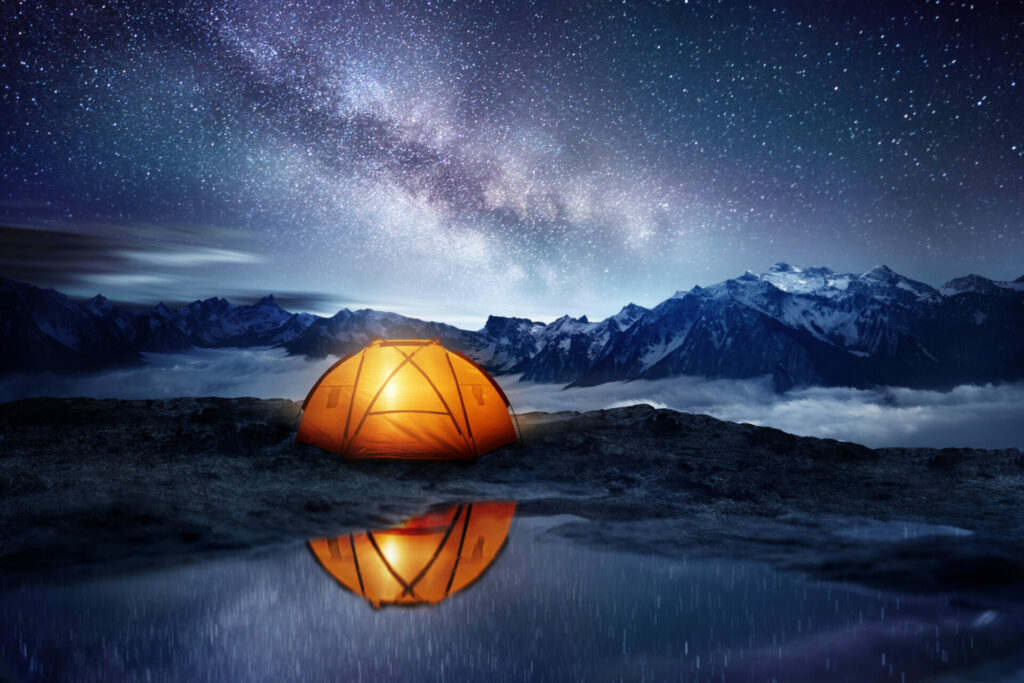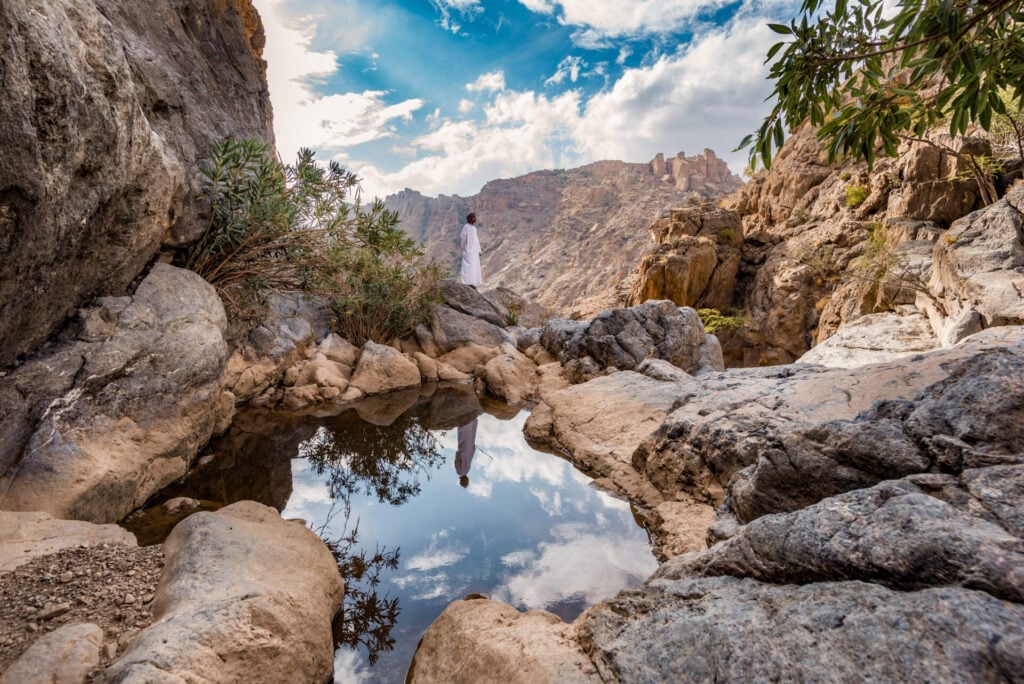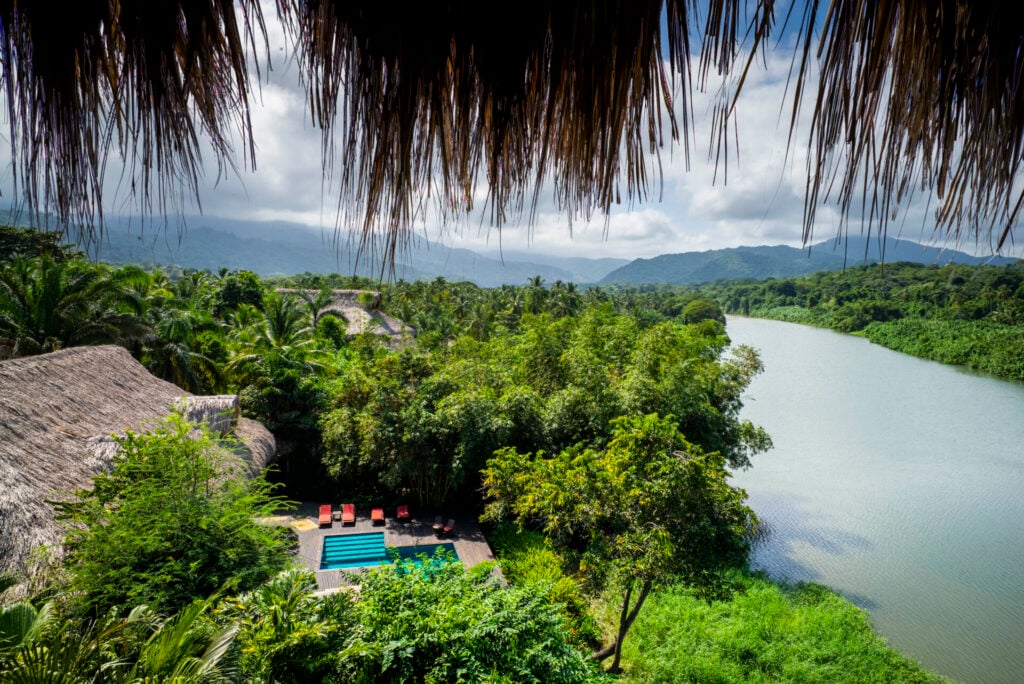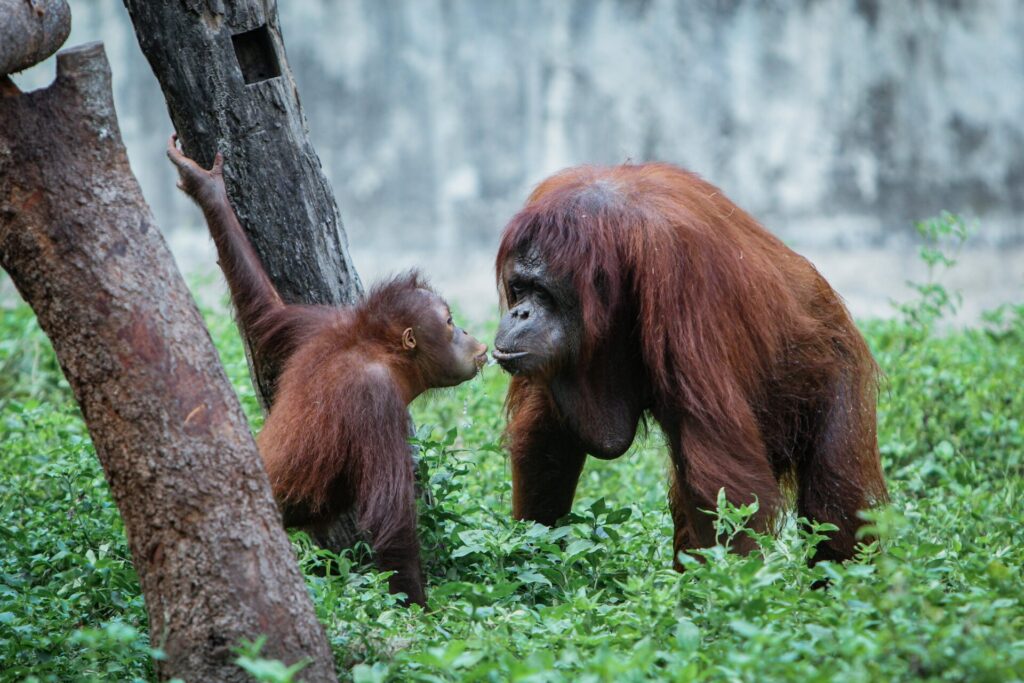I’ve barely got over the excitement of spotting one huge turtle chomping on seaweed beneath me, when another comes cruising past, and a third starts to emerge towards me out of the deep. Joined by hundreds of colourful fish and coral, it’s some of the most spectacular snorkelling I’ve ever experienced.
You probably think I’m describing a trip to the Maldives. But, in fact, this glorious marine ecosystem is far more accessible, and closer to home. Located an hour’s flight, or a five-hour drive from Dubai and Abu Dhabi, Oman is home to some of the most important turtle nesting grounds in the world, and one of them happens to be right outside the Shangri-La Barr Al Jissah, Muscat resort.
Just a 30-minute drive from the capital, the 124-acre property is the biggest in Shangri-La’s global portfolio. Taking in three hotels – the adults-only Shangri-La Al Husn and the family-friendly Shangri-La Barr Al Jissah (split into the Al Bandar and Al Waha wings) – 129 nesting turtles gave birth to 3,292 hatchlings here in 2024.
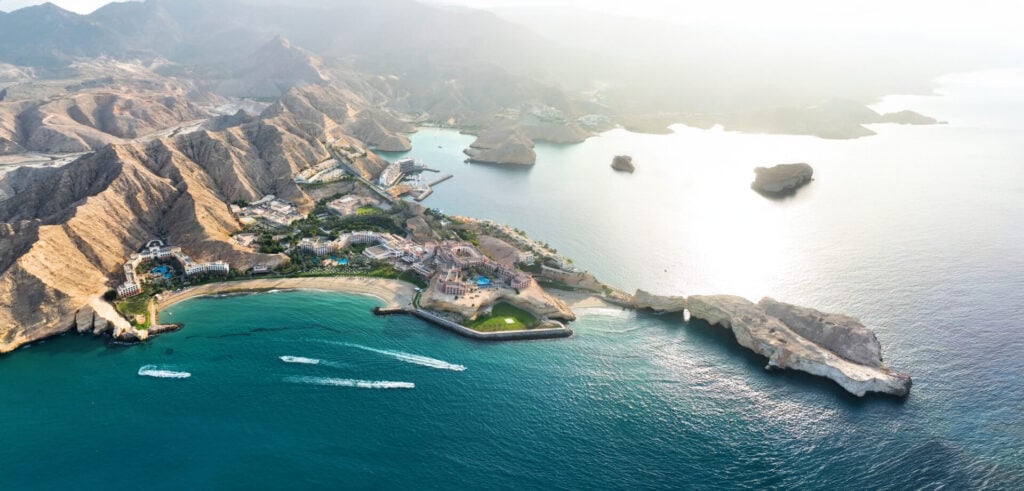
Turtle conservation
This year’s count looks to be even bigger (they were already on 94 nests when I visited in April), and the hotel is invested in protecting them. To raise awareness about Oman’s endangered green turtles and critically endangered hawksbill turtles, it invites guests to participate in turtle releases, snorkelling excursions and other conservation-based activities.
Mohammed Al Hassani, the property’s dedicated Turtle Ranger for almost 20 years, was born just down the coast in the fishing village of Qantab. During nesting season (February to September), Al Hassani and his team conduct nighttime beach patrols to ensure that the nesting turtles are not disturbed. They also cordon off and monitor any nests they find, and try to help the thousands of hatchlings make it safely to the sea.
Mohammed tells The Ethicalist that turtles always return to nest at the same beach they were born.
‘It takes around 20 minutes for a turtle to make its way up the beach and find a spot for its nest. Then they use their flippers to dig down half a metre into the sand – a process that can take about an hour. Then she will lay her eggs, normally between 100 and 120, and cover up the nest before making her way back to the water. Guests can come out and watch the nesting but of course it’s very important that they remain quiet and give the turtle space.’
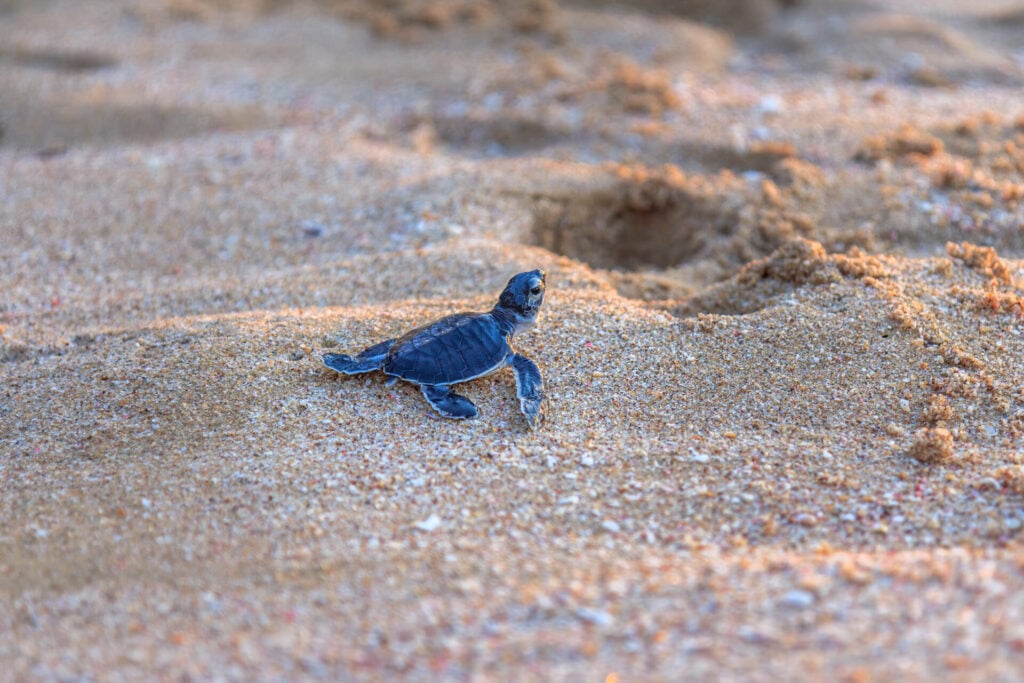
While I didn’t personally get to see a turtle nesting during my visit, I was lucky enough to witness some hatchlings being released. Joining a throng of families on the main beach, it was amazing to watch the tiny turtles make their pivotal walk down the sand and into the waves. Almost like they knew what was coming, birds started circling above our heads even before the release began, and the team had to wave flags to keep them away.
‘Around 60 to 90 percent of the eggs in each nest will hatch, and their walk from the nest to the ocean can be very dangerous,’ explains Mohammed. They are vulnerable to being eaten by birds, foxes or other predators. Their first 15 to 20 days at sea are also risky as they can’t dive down yet.’
Mohammed was also my guide during the aforementioned snorkelling expedition. However, once I knew where to go (just through the striking natural stone arch at the Al Husn private beach) it wasn’t hard to head out and find them by myself.
Frankincense expertise
The second most unique element of the resort is the frankincense garden, and Khalid Al Amri, the frankincense sommelier who tends to it.
Proud to be Oman’s first accredited frankincense sommelier, Khalid studied the art of frankincense (or Luban as it is called in Oman), for two years. He also travelled extensively through Salalah in the southern Al Dhofar region to meet local frankincense farmers and learn more about its origins.
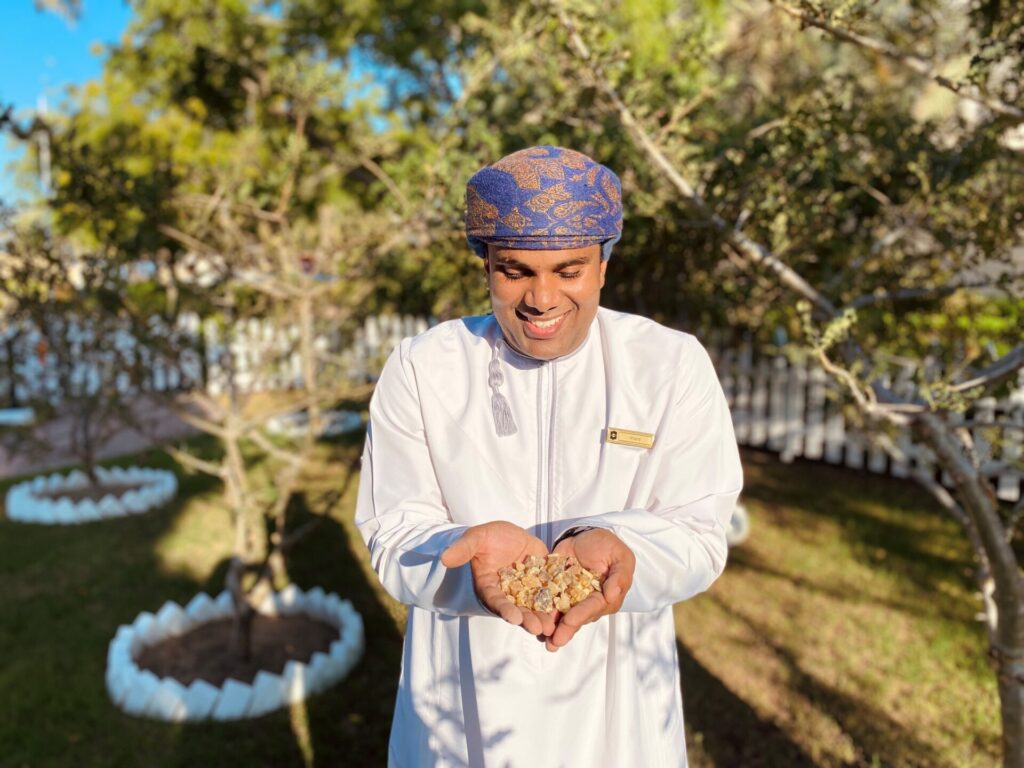
As Culture and Heritage Ambassador for the hotel, he leads daily tours of his trees (or, as he calls them, ‘his babies’). I managed to squeeze on a tour to learn about the precise and careful way that the aromatic frankincense resin is extracted from the trees, its many uses, including its medicinal properties, its important cultural symbolism, and the different varieties available.
Indeed, everything from the architecture to the design and the names of the rooms and wings at Shangri-La Al Husn (translating to mean ‘castle’ in Arabic) is rooted in Omani history and heritage. I sampled delightful frankincense-infused cocktails, hummus and more delicacies at the restaurants, and received an incredible frankincense oil massage at the spa, too
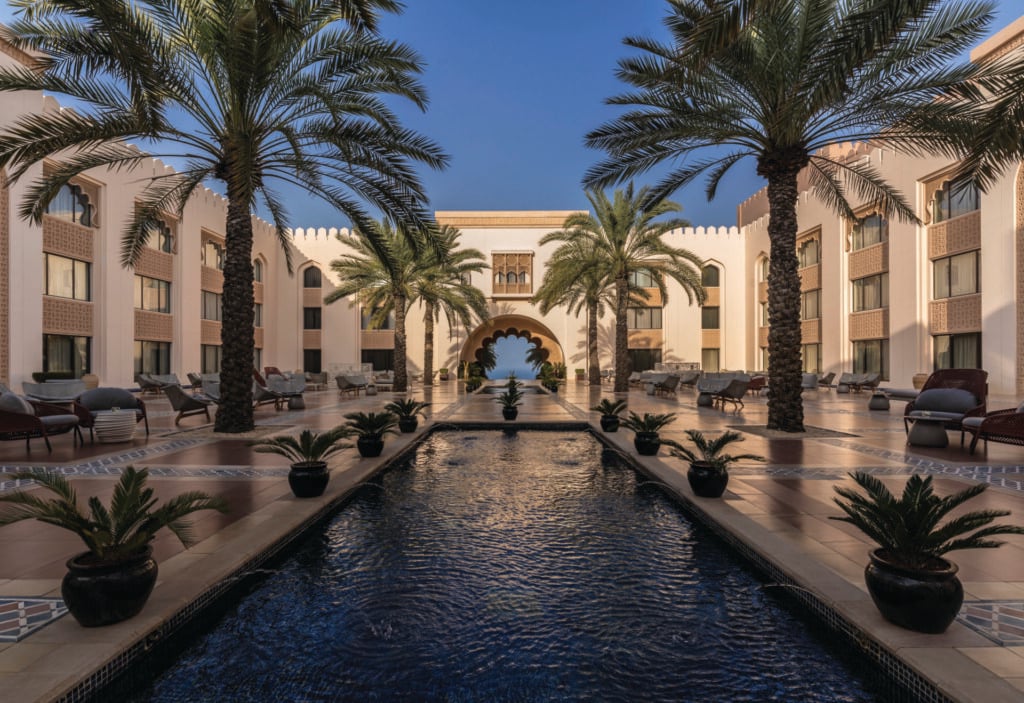
Committed to Shangri-La’s brand-wide Rooted In Nature sustainability campaign, around 70 percent of the ingredients used across all three hotels are also locally and ethically sourced.
Nature and relaxation
Another highlight of the stay was dolphin watching from the nearby Marina Bandar Al Rowdar. Witnessing dozens of dolphins playing in the waves was unforgettable, and it was also wonderful to admire Oman’s cliffs, mountains, and diverse landscape from the water.
Of course, the private cove of Shangri-La Al Husn, Muscat is one more major attraction. Offering a barefoot luxury beach bar and free snorkel masks and fins for rent, it feels more like being marooned on a tropical island than a resort in the Middle East.
But perhaps the most bucket list-esque experience of all was enjoying aperitivo on the jaw-dropping clifftop. A popular spot for proposals and romantic dinners, the panoramic viewpoint invites you to admire Oman’s elegant curved cliffs in all their glory, and of course the never-ending blue of the beautiful Arabian Sea.
If you are looking for a regional escape filled with nature, local culture and pure adults-only relaxation, Shangri-La Al Husn, Muscat should be top of your wish list.
To learn more about Shangri-La Al Husn, Muscat and its conservation efforts, visit shangri-la.muscat.com



